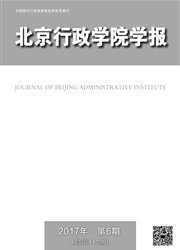

 中文摘要:
中文摘要:
目前,国内学界对政府人力规模所进行的定量分析和实证研究主要局限于从纵向和横向两个基本视角对中国政府的人力规模进行历史考察和国际比较,对我国省级政府人力规模影响因素的定量研究尚不多见,基本上是政府人力规模问题研究的空白点。本文以2006年全国30个省级行政单位(台湾、香港、澳门、西藏除外)为样本,通过Eviews5.1软件对省级政府人力规模的影响因素进行定量回归分析,发现经济发展水平、市场化综合指数、地域面积、政府财力因素与我国省级政府人力规模呈正相关关系,人口因素与省级政府人力规模呈负相关关系。这个结论与我国许多学者的经验观察与主观感受是相反的。在此基础之上,提出了对我国省级政府构建合理、适度人力规模行之有效的政策建议。
 英文摘要:
英文摘要:
At present, the quantitative analysis and empirical research of Chinese academia on government population scale was limited to the historical review and international comparison of population scale in Chinese government from both the diachronic and synchronic perspectives. Among the research on government population scale, the quantitative study of the influencing factors of government population scale in China's provincial-level local governments is lacking. Taking 30 provincial-level administrative units (excluding Taiwan, Hong Kong, Macao, Tibet), this paper conducts a quantitative regression analysis of the influencing factor in Chinese provincial-level local governments using the Eviews 5.1 software. The findings show that while there is a positive correlation between the level of economic development, the composite index of Marketization, territory, government financial resources and population scale in China's provincial-level local governments, there is a negative correlation between the population factor and population scale in China's provincial-level local governments. This conclusion is opposite to the empirical perspectives of many Chinese scholars. Finally, this paper put forwards some policy suggestions for China's provincial-level governments to control reasonable and appropriate population scale.
 同期刊论文项目
同期刊论文项目
 同项目期刊论文
同项目期刊论文
 期刊信息
期刊信息
